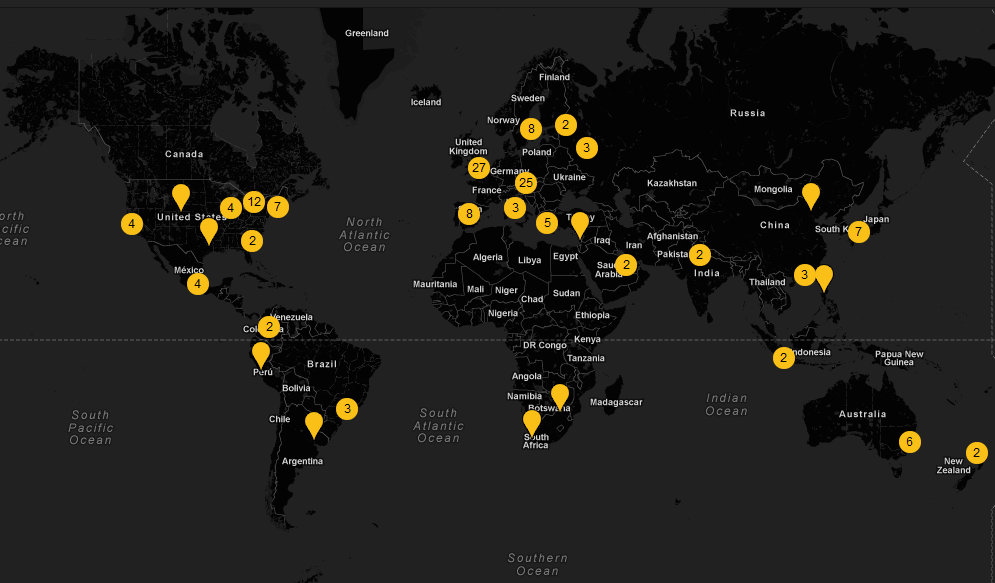There’s something neat about looking at your favorite work of art online. Services like the Google Art Project and Painting Portal allow users to view a multitude of works from around the world. You can zoom in way closer than you’d ever be allowed to be in a museum. You can return to the images online whenever you want, without paying an entry fee. And the latest trend we’re seeing, you can download the images for whatever you want.
Looking at the Land: The Crowdsourced, Digital Exhibition from Flak Photo’s Andy Adams
He needs no introduction, but for new visitors to our site it is my pleasure to welcome back Andy Adams to Technology in the Arts.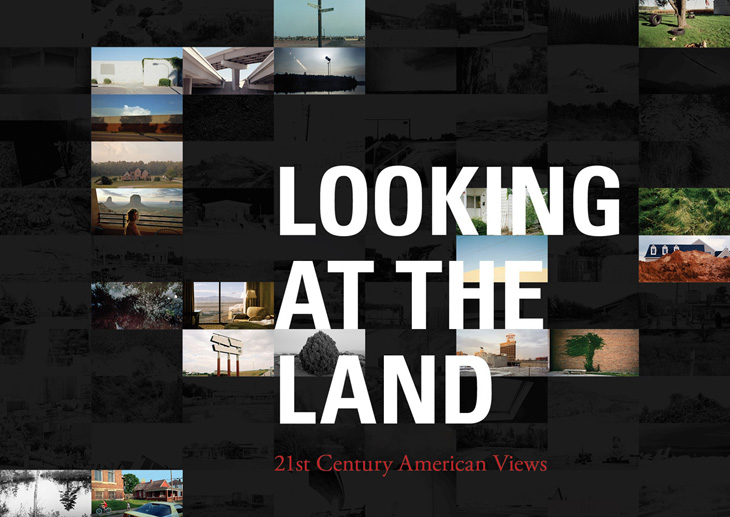 You may remember our conversation with Andy in May when we discussed the concept of Photo 2.0 and the role of Web 2.0 technologies in redefining the field of photography.
You may remember our conversation with Andy in May when we discussed the concept of Photo 2.0 and the role of Web 2.0 technologies in redefining the field of photography.
Andy’s newest success, “Looking at the Land: 21st Century American Views,” is a digital exhibition of 21st Century American Landscape photography. The exhibition, prepared in collaboration with the Museum of Art, Rhode Island School of Design, is a discussion (both in photographs and in interviews) with eighty-eight photographers on the practice and meaning of landscape photo-making in the 21st Century. On the website, Andy discusses the current status of the exhibition, including the presentation of twenty of the photographs in physical form at the FotoWeek DC 2012 festival.
Andy and I again had the chance to discuss the themes of photography and online-presenting, but this time focused on the process of organizing a digital exhibition, his experience with crowdsourcing creativity, and his thoughts on the effects of digital projection on viewing. While my full interview with Andy will be posted here on Technology in the Arts soon, I encourage you to view the online exhibition beforehand (available for viewing below).
[embed]http://vimeo.com/49855891[/embed]
Check back in next two weeks for more of Andy’s insight on the future of photography, digital exhibitions, and crowdsourcing creativity.
Cultural Preservation: Future Concerns, Trends, and Hypotheses
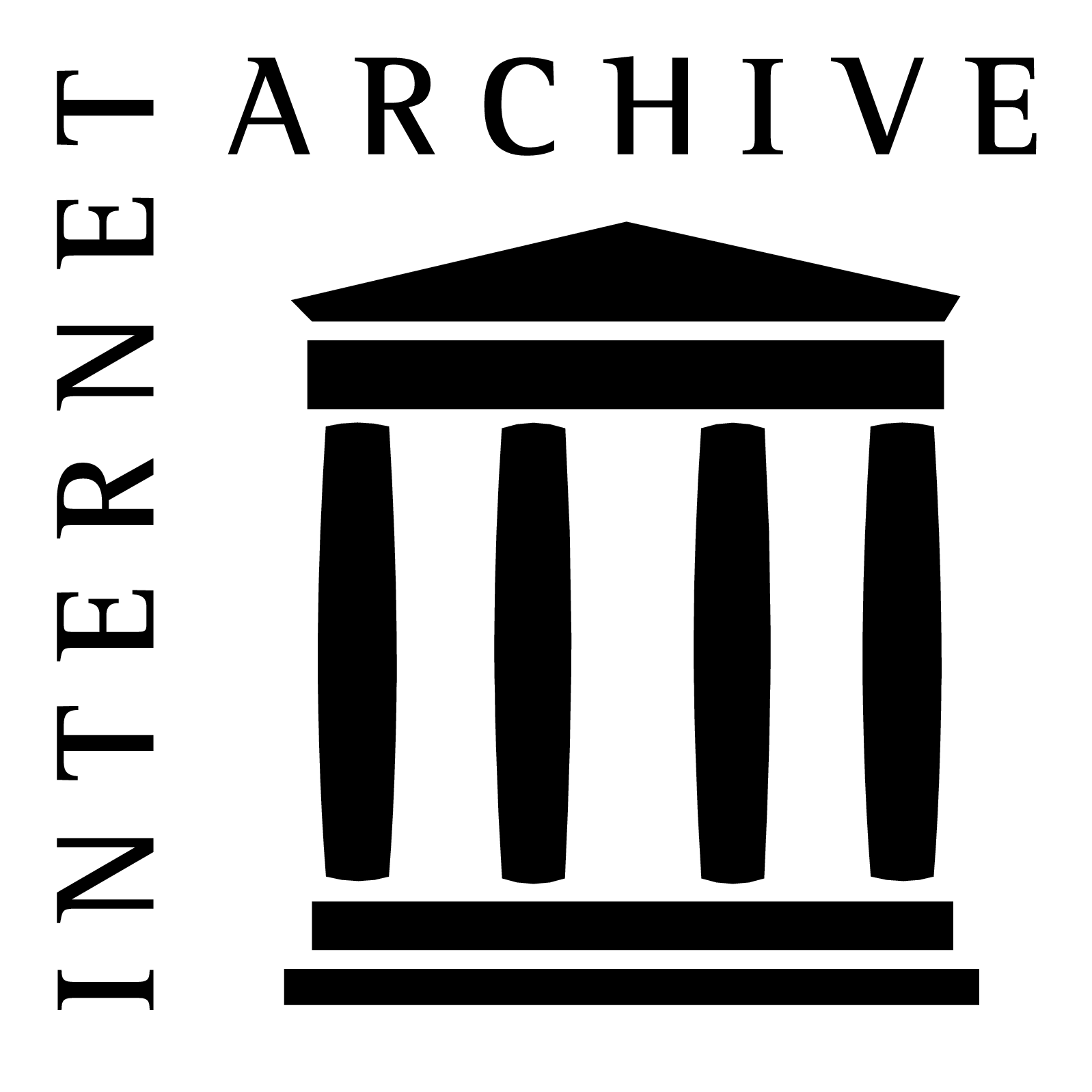 The numerous civilizations of the past left behind numerous tangible traces of their heritage. Coveted or discarded, scattered or buried, broken or intact, these objects would soon become artifacts. Archeologists would study them, museums would acquire them, and the rest is none other than History. But what happens when the core activities of a civilization leave scarce amounts of tangibles? What happens when the pace of change is faster than that of preservation? We should start formulating a response, for this describes none other than the 21st century.
We live in an age of information, of which a substantial amount now exists online, but is constantly in flux. The Economist described this phenomenon in an article titled History Flushed, where the author argues that archivists are limited in their activities of digital preservation due to anti-piracy legislation and software such as Digital Rights Management.
The numerous civilizations of the past left behind numerous tangible traces of their heritage. Coveted or discarded, scattered or buried, broken or intact, these objects would soon become artifacts. Archeologists would study them, museums would acquire them, and the rest is none other than History. But what happens when the core activities of a civilization leave scarce amounts of tangibles? What happens when the pace of change is faster than that of preservation? We should start formulating a response, for this describes none other than the 21st century.
We live in an age of information, of which a substantial amount now exists online, but is constantly in flux. The Economist described this phenomenon in an article titled History Flushed, where the author argues that archivists are limited in their activities of digital preservation due to anti-piracy legislation and software such as Digital Rights Management.
“As companies more fiercely protect their wares, contemporary digital artefacts run the risk of never being archived. Libraries have no mandate to collect apps, such as Angry Birds or Instagram, which form part of popular culture.”
In the same article, the author mentions how efforts are being made by governmental archives in the UK and the US, and non-profits like the Internet Archive. The latter is a truly comprehensive internet library that was founded in 1996 and has since become a vast collection of “texts, audio, moving images, and software as well as archived webpages.” With so much of our culture now in digital format, will there be a shift in the responsibility of preservation, one from our museums to organizations specializing in digital archiving?
Yes, I believe so. Because our digital footprints are becoming bigger and more pronounced. And this seemingly unimaginable amount of information, along with our technologies and software, will most likely be preserved by various non-museum organizations; from tech giants like Google, to nonprofits like the Internet Archives, and even individuals (take a look at the Museum of Sounds).
So what of our museums? In a recent post on museum geek, Susie Cairns asked this very question. She wondered whether the plight of newspapers, and their subsequent shift towards digital content, heralds a change in museology. Especially in the way culture is preserved;
“Now is that time for museums. We still need the things that museums do. We still need to know how to select, preserve and disseminate, whether objects or information. What we don’t need is museums. If those same needs can be met by other means (digital or otherwise), the impact on museums will be significant. I think it’s important to keep this in mind as we look to the future, particularly as we see the effects of the Internet on other traditional institutions.”
While I agree with her to a certain extent, it's difficult to imagine a museum free future. The internet has definitely made it easier for us to access information about an object, but not the object itself. And even if the object can somehow be experienced remotely, it will still exist and so will the museum. Yet I can see how a technology such as augmented reality (or something not yet developed) may further separate the preservation of an object from the dissemination of its meaning to audiences. So much so that people need not visit museums.
But museums must realize this too because there have been some interesting collaborations between the tech and cultural world. Google’s work with various cultural organizations through its Cultural Institute, Nintendo’s collaboration with the Louvre, the recent 3-D printing event involving the Met and ScanBot are all examples of museums keeping apace with technology’s giant leaps. Hopefully, they will continue to make such leaps and stay wary of stumbling into obsolescence.
The Space: A Summer of English Arts on a New Experimental Platform
This Olympiad summer, the arts in the UK will be consolidated onto a single online platform called The Space. What’s more? The content on The Space is being provided for free! There’s room, or more fittingly, seats for all, at venues such as the World Shakespeare Festival or Yayoi Kusama’s Obliteration Room at the Tate.
“The Space is a new way to access and experience all of the arts – for free.Available on computer, tablet, smartphone and connected TV, The Space invites you to take part in the biggest summer of arts the UK has ever seen, whenever you want it and wherever you happen to be. ”
 The Arts Council England in partnership with the BBC created The Space as a way for people from all over the world to experience the country’s rich and dynamic arts scene. In effect, a summer of English arts to all! (Albeit without the English summer and its cool Constable Skies). So The Space is certainly something to look forward too because it will feature some of the UK’s best theatrical productions, dances, musical performances, art exhibits, poetry readings, along with content that has been specifically created for the platform.
The Arts Council England in partnership with the BBC created The Space as a way for people from all over the world to experience the country’s rich and dynamic arts scene. In effect, a summer of English arts to all! (Albeit without the English summer and its cool Constable Skies). So The Space is certainly something to look forward too because it will feature some of the UK’s best theatrical productions, dances, musical performances, art exhibits, poetry readings, along with content that has been specifically created for the platform.
Through the course of the summer, the performances staged in theatre, dance, film, and music will be showcased via recordings and live streaming while exhibitions at museums and galleries will be presented via behind-the-scenes footage, photographs, and interviews with artists and curators. The Space will also feature experimental and interactive digital art that can be experienced on the platform itself. Finally, for poetry and literature, there will be a variety of formats, including podcasts, poetry readings, and interactive audio-visual timelines such as the 60 Years in 60 Poems.
While live streaming and online exhibits aren’t entirely new to the performing or visual arts, the presentation of all the arts, all at once, and in one place, is certainly a novelty. As such, The Space is truly remarkable because it is no ordinary task to fit an entire country’s arts scene onto a single platform! If other countries too made their arts available on interactive, well designed platforms, the internet would surely be a destination in itself. Perhaps the introduction of The Space suggests that it already is?!
The Space also signals another significant trend; the quality of arts being made available online continues to improve. Whether it is in opera, film, or even, educational art history, we are privy to some great material. At the same time, the problem with the online format is that there are times when our Google searches are less than serendipitous and our social networks less than social. On such days, we miss out on a lot of online events, projects, and experiments.
Yet on The Space, what will remain certain is most certainly the art. And at the end of each adequately sunny day across the Atlantic, the platform will be populated with new content for visitors to see, hear, read, and experience. Moreover, the content on this living library of the arts will be available until October. After that, it will be time, once again, to continue our search for the arts on the virtual infinity of the internet (The outer Space).
The Google Cultural Institute
Once a search engine for the curiously puzzled, the Google of today is not only a superior resource gateway but also a vast and interconnected information hub. When in doubt about your train of thought, just hop on aboard the Google express. Even for doubts verging on the impossible; search for walking directions from the Shire to Mordor on Google Maps and you are admonished that “one does not simply walk into Mordor.”

The dangers of Sauron aside, today Google can just as easily claim that one does not simply stop googling. It is now a verb, a translation service, a virtual wallet, a communication and storage platform, a social network, and more recently, a cultural institute.
“The Google Cultural Institute helps preserve and promote culture online. With a team of dedicated engineers, Google is building tools that make it simple to tell the stories of our diverse cultural heritage and make them accessible worldwide. We have worked with organisations from across the globe on a variety of projects; presenting thousands of works of art online through the Art Project, digitising the archives of Nelson Mandela and showcasing the Dead Sea Scrolls.”
Of the initiatives of the Google Cultural Institute, the Art Project and the Dead Sea Scrolls have received the most amount of attention. As such, we opted to take a look at some of the other projects that are changing the landscape (quite literally) of online cultural preservation.
Nelson Mandela Digital Archives Project
 In 2011, the Nelson Mandela Centre of Memory partnered with Google to digitize and disseminate the archives of Nelson Mandela. The collaboration has resulted in a visually engaging timeline of Nelson Mandela’s life, populated with photographs, diary entries, letters, and excerpts from his autobiography. The site is worth a visit because it both explains and celebrates the enduring legacy of the South African statesman.
In 2011, the Nelson Mandela Centre of Memory partnered with Google to digitize and disseminate the archives of Nelson Mandela. The collaboration has resulted in a visually engaging timeline of Nelson Mandela’s life, populated with photographs, diary entries, letters, and excerpts from his autobiography. The site is worth a visit because it both explains and celebrates the enduring legacy of the South African statesman.
World Wonders Project The World Wonders Project is perhaps the next iteration of the Street View mode in Google Maps. In a partnership with UNESCO, the World Monument Fund, and Getty Images, the project “allows you to navigate virtually around some of the most important, historical and beautiful world heritage sites through panoramic street-level images, experiencing these places almost as if you were there.” The project is an impressive window to the world but is perhaps most suited to educational purposes.
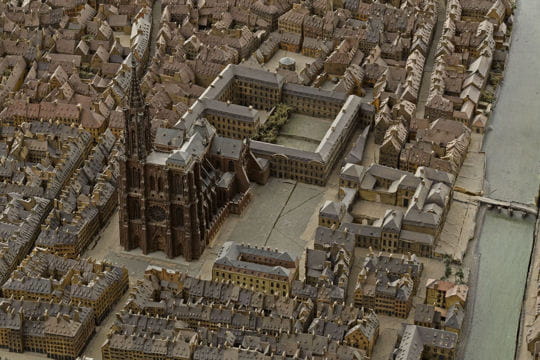 La France en relief
When the Grand Palais in Paris organized an exhibition showcasing 17th and 18th century relief maps of fortified towns in France, Google helped render seven of those models in 3-D. As such, seven fortified towns in France were built anew, in all their artisanal detail, on Google Earth. Furthermore, the reach of the exhibition was no longer limited by the very concept being showcased; geography.
La France en relief
When the Grand Palais in Paris organized an exhibition showcasing 17th and 18th century relief maps of fortified towns in France, Google helped render seven of those models in 3-D. As such, seven fortified towns in France were built anew, in all their artisanal detail, on Google Earth. Furthermore, the reach of the exhibition was no longer limited by the very concept being showcased; geography.
La Pavillon de l’Arsenal (Paris Center for Architecture and Urbanism) Just as Google re-envisioned the past at the Grand Palais, at La Pavilon de l’Arsenal, it envisioned the future. Visitors were given a chance to explore the urban landscape of Paris of 2020 through “the first ever 48 screen interactive Liquid Galaxy display, which featured “3D models of the buildings, designed but not yet built, by architects such as Patrick Berger and Jacques Anziutti, Jean Nouvel and Rudy Ricciotti.”
Yad Vashem
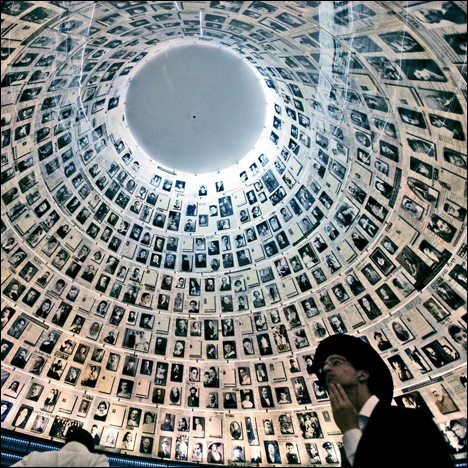 Google has helped digitize the vast archives of Yad Vashem, which is “the world center for documentation, research, education and commemoration of the Holocaust.” Through a technique called optical character recognition (OCR), Google has enabled families to search for both documents and images belonging to their relatives.
Here is an example given by Google: “To experience the new archive features yourself, try searching for the term [rena weiser], the name of a Jewish refugee. You’ll find a link to a visa issued to her by the Consulate of Chile in France.”
Google has helped digitize the vast archives of Yad Vashem, which is “the world center for documentation, research, education and commemoration of the Holocaust.” Through a technique called optical character recognition (OCR), Google has enabled families to search for both documents and images belonging to their relatives.
Here is an example given by Google: “To experience the new archive features yourself, try searching for the term [rena weiser], the name of a Jewish refugee. You’ll find a link to a visa issued to her by the Consulate of Chile in France.”
So there you have it, some of the Google's lesser known projects. Looks like culture is out there, quietly populating the internet. One need only google it.
The Google Art Project and Art.sy: Exploration Engines for Art
The complexity and depth of the world’s art and culture is incredible and incredibly incomprehensible. Incredible because it evades definition and is relentlessly dynamic. Incomprehensible because the individual knowledge, time, and resources required to explore this cultural infinity are all too finite. Thus in this ever expanding universe, it is all too easy to gravitate towards the black hole of ignorance. But fear not, recent developments in technology are here to help steer us away from that ill-fated course. The upgrade of the Google Art Project and the launch of Art.sy are helping us understand our cultural universe, one art work at a time. With Google’s integrated documentation of the world’s museums, our artistic past is both nearer and clearer (literally, with a 7 billion pixel Rembrandt!). And Art.sy’s role as a “dynamic inventory” of emerging artists is an opportunity to discover contemporary art without being at the center of the artistic universe (New York or London).
The second phase of the Google Art Project has seen a massive expansion in the number of museums available on view. “Since last year, the Art Project has expanded its reach: 151 museums are now partners (compared to 17 in V1) providing over 30,000 artworks, from 40 countries (compared to 9 countries last year).”
From the National Gallery of Modern Art in New Delhi to the Getty Museum in Los Angeles, a visitor can experience a significant portion of the world as seen through objects, artifacts, paintings, and sculptures. Its new features include the ability to create your own collections and place them in personal “galleries”. The site also includes an entire section on ways to educate and be educated! For the initiated visitor, it is an invaluable opportunity for art historical exploration!
In its broader implications, the Art Project is a window into national identities as created through heritage and can be viewed as a vehicle for cultural diplomacy. This notion may seem overly ambitious, given the sites’ hyper-virtual immersion in a country’s artistic wealth and apparent disregard of chronology. But it exists nonetheless, as a weaker current that may invoke some to pursue additional research, and even create travel plans!
Additionally, the countries represented benefit from showcasing the wealth of their museum’s collections on an integrated domain, alongside world-renowned museums such as the Met. In essence, the Google Art Project acts as a virtual art fair for the world’s museums. It can either be surveyed at a harried pace or explored with deliberation. Either way, you get to collect works and create galleries for no cost at all!
In a similar vein to the Google Art Project, Art.sy is helping the world discover contemporary art, a category that often transcends national boundaries and is increasingly difficult to keep up with, let alone understand! With Art.sy the difficulties of “discovering fine art” are eased with the development of the Art Genome Project, “an ongoing study of the characteristics that distinguish and connect works of art.”
The website recently launched its beta version and some of its remarkable features were highlighted by the lucky few who were given access. Essentially, Art.sy allows users to discover new artists and works based on a set of 800 characteristics or genes that are assigned to each work of art. Given a user’s interest in a work of art and the underlying genes that are encompassed within, it suggests additional work that may interest them. Users can also choose to follow an artist or a gallery and of course, contact the gallery if they are interested in making a purchase.
A review by BetaBeat praised the site for its ability to lead an average art appreciator “to artists like Sherin Guirguis, a young Egyptian artist whose abstract paintings resemble fractals and eyeballs.” At the same time, it was criticized for only having secured partnerships with the leading galleries of the world and effectively limiting the art on view. Art.sy also retains an air of exclusivity, one that it may carry with it into the future.
Nevertheless, it would be remiss not to give the unique and brilliant workings of Art.sy a try.
In effect, both Art.sy and the Google Art Project are innovative discovery engines for art. The differentiation lies in that the former knows where you are headed even as you might not. The latter, in contrast, lets you meander your way to a destination unknown, an artwork unseen.
The Google Art Project Welcomes You to the White House
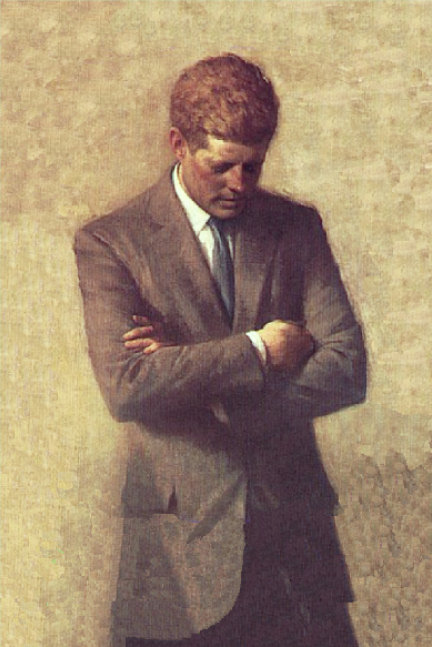 Ever wanted to take a tour of the White House? Well now you have a chance, and you can do it all from the comfort of your living room.
The Google Art Project, a site devoted to presenting high resolution photographs of hundreds of works of art and museum tours from some of the finest museums in the world, including the Palace of Versailles, the Van Gogh Museum and the Metropolitan Museum of Art, has unveiled its latest project, a captivating look inside the world’s most famous residence, the White House.
Ever wanted to take a tour of the White House? Well now you have a chance, and you can do it all from the comfort of your living room.
The Google Art Project, a site devoted to presenting high resolution photographs of hundreds of works of art and museum tours from some of the finest museums in the world, including the Palace of Versailles, the Van Gogh Museum and the Metropolitan Museum of Art, has unveiled its latest project, a captivating look inside the world’s most famous residence, the White House.
As part of what the White House calls its “commitment to opening the doors of the White House to all Americans,” the site primarily does two things. First, it presents images of dozens of paintings and works in art in stunning high resolution quality; and secondly, my favorite part, it offers a 360-degree view of many of the “public” areas of the White House, giving you your own personal tour!
The White House is the latest location added to Google’s Art Project website, which has steadily grown in recent months by adding some of the top museums in the world to its collection. It really is a site to behold and a must visit for arts lovers everywhere; by taking some of the world’s best collections and putting them online free of charge for the world to see, it really does represent one of the best ways to merge technology with the arts to generate enthusiasm and excitement for the stunning works of art that are now viewable in all their high definition glory.
For the paintings and works of art themselves, Google features what they call a “gigapixel” camera that offers an extremely high resolution look at some of the most famous paintings in the White House collection, including Gilbert Stuart’s famous portrait of George Washington. Viewers can zoom in and examine the paintings in EXTREMELY close detail, all the way down to the brushstrokes, just as you would if you were to view them in person, right?
You’ll find hundreds of paintings, sculptures, pieces of furniture, and more available for view. You’ll also find a portrait of almost every former president as well. Some of my favorite presidential portraits, which I have seen before on either book covers, in print or elsewhere, were immediately noticeable and fascinating to view up close and in so much detail. Some of my favorites include Aaron Shikler’s portrait of John F. Kennedy, John Singer Sargent’s portrait of Teddy Roosevelt, George P.A. Healy’s portrait of a sitting Abraham Lincoln, and last by not least, John Trumbull's portrait of my favorite founding father, Alexander Hamilton.
The coolest part of the site however, if you’re like me, is the virtual tour. In recent months, Google has made headlines by starting to take their Street View cameras indoors to start photographing businesses and places of interest to add to its Google Maps site. What Google has done here is to take those Street View cameras inside the White House and presented a “museum view” of the public spaces inside. Here is where you can walk around and give yourself a tour of two floors of the White House, seeing sights like the East Room (where indoor press conferences are usually held) and the China Room, where presidential china collections dating back to the 18th century are held.
Not everyone will have the chance to visit Washington and take the White House tour (which is a hard ticket to come by, and even if you can get on the list, usually requires a several months long wait), but thanks to Google, we now have the next best thing, viewing many of the sights you would see on a tour on your computer screen.
This may be one of the few things everyone can agree on when it comes to the White House: having an opportunity to view the magnificent works of art from the White House collection in such high resolution is a welcome treat, and worthy of praise. I encourage everyone to check out the site and go exploring!








